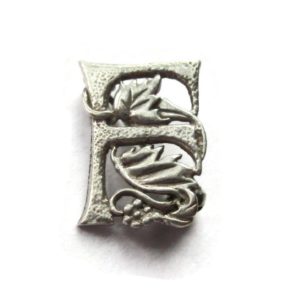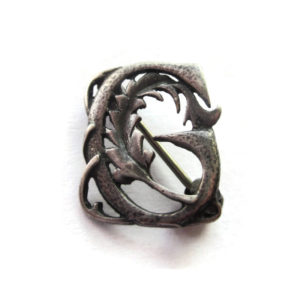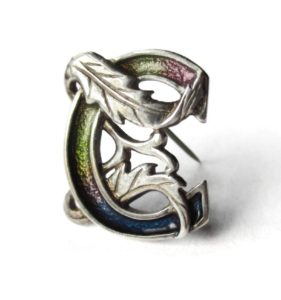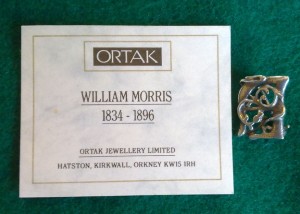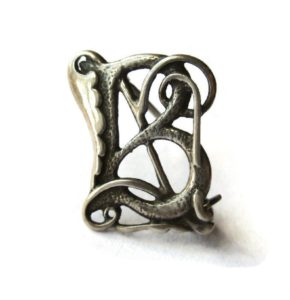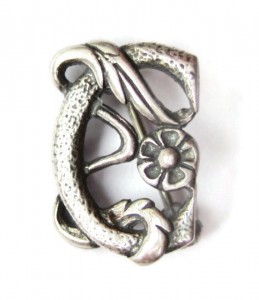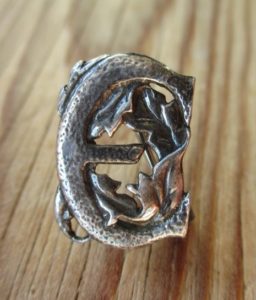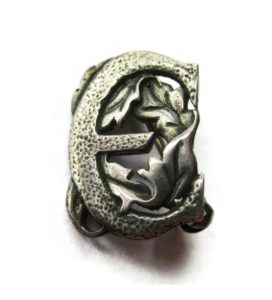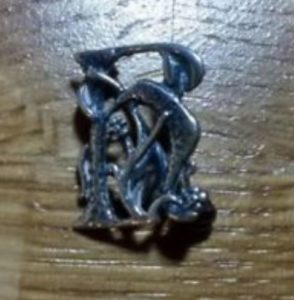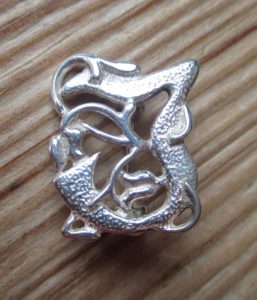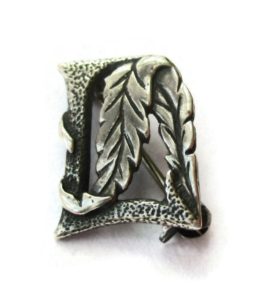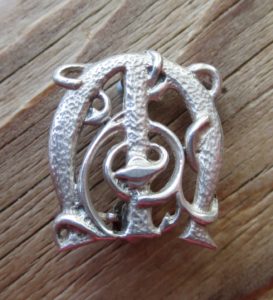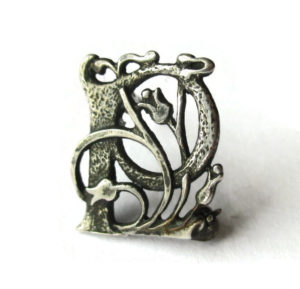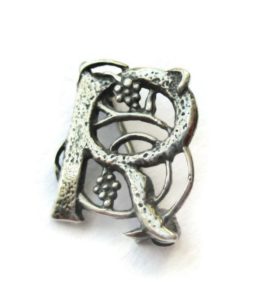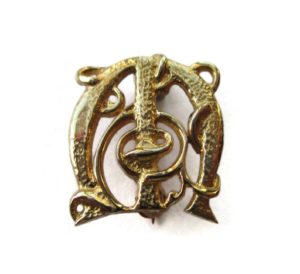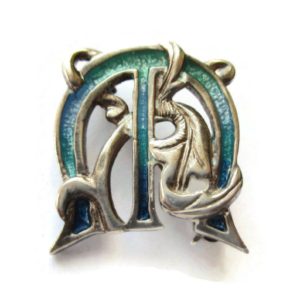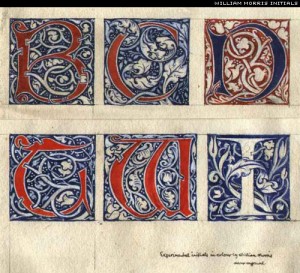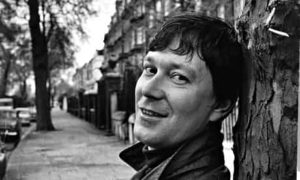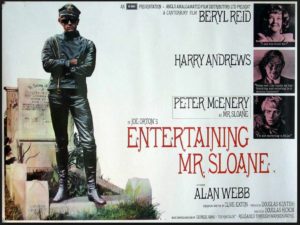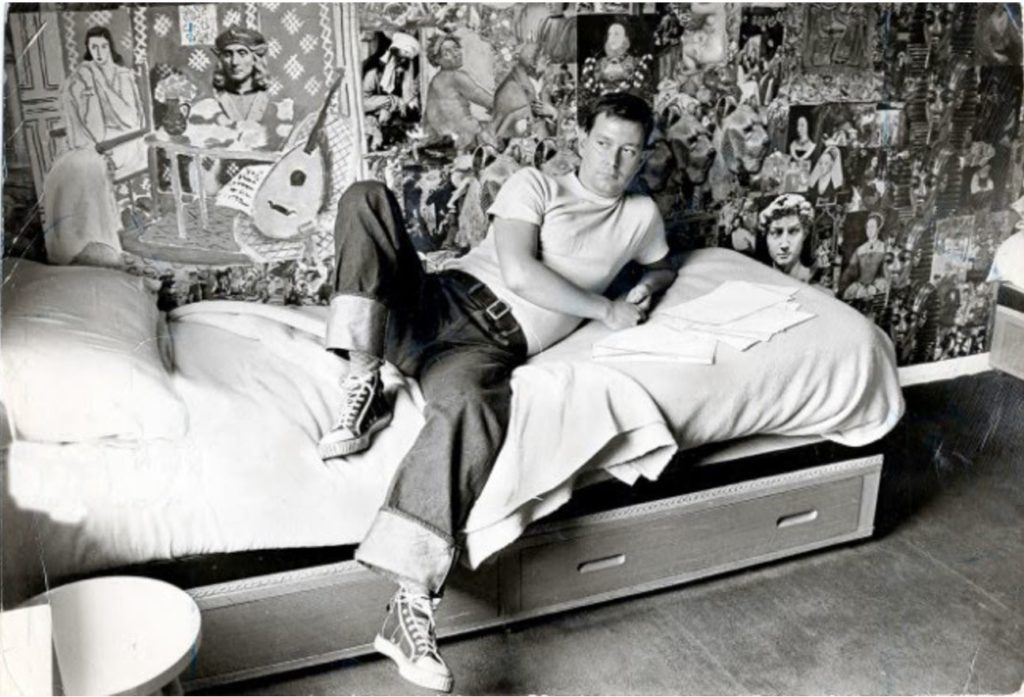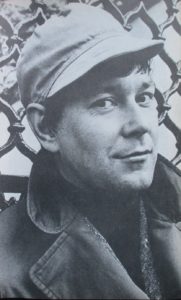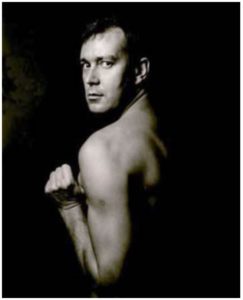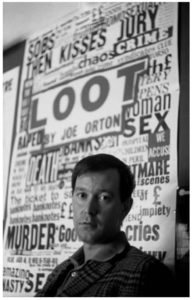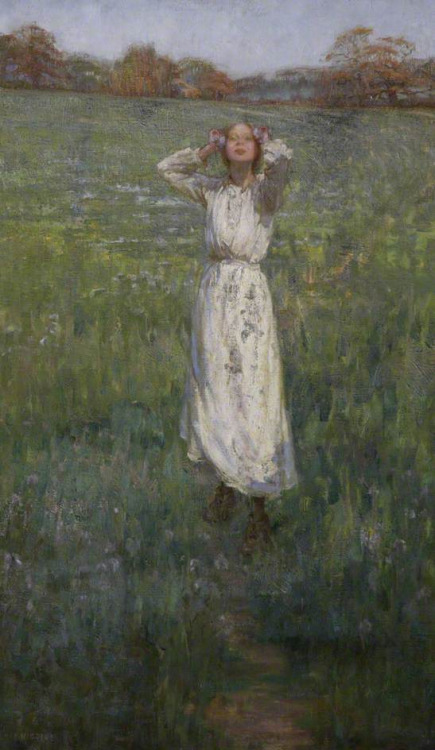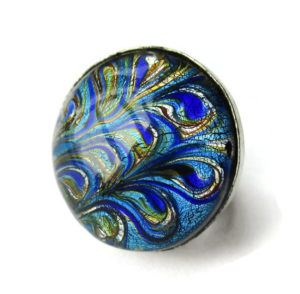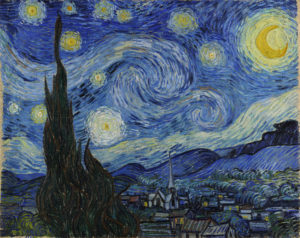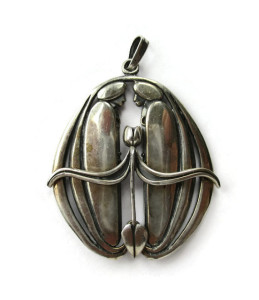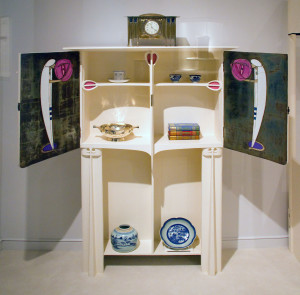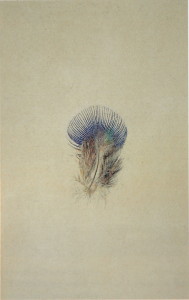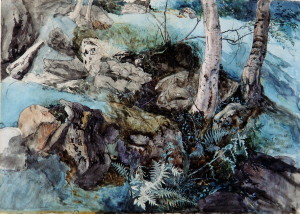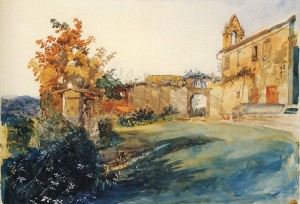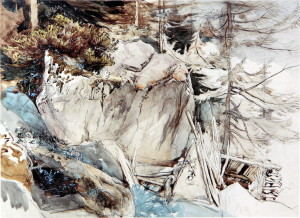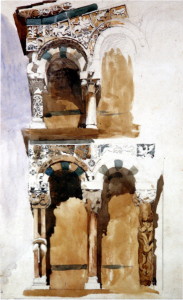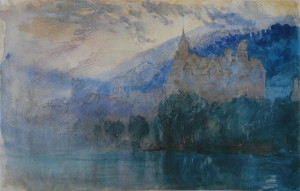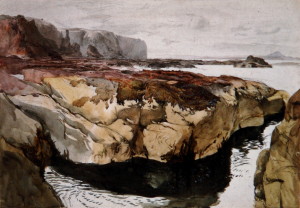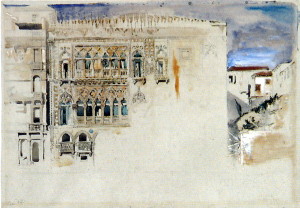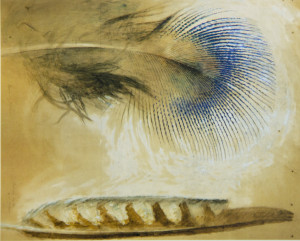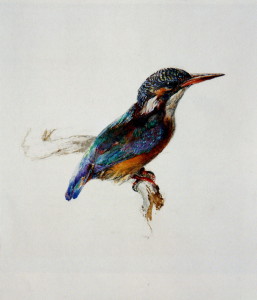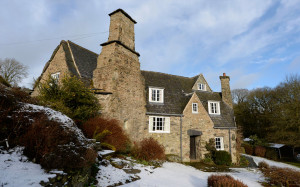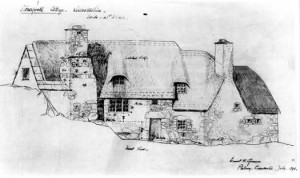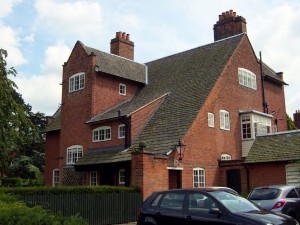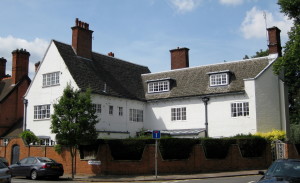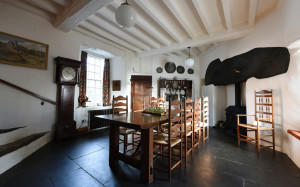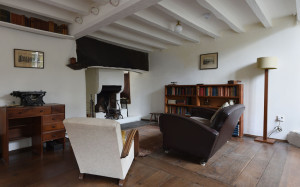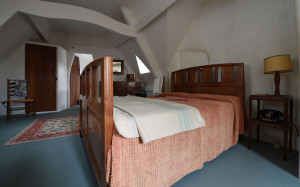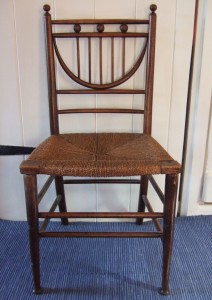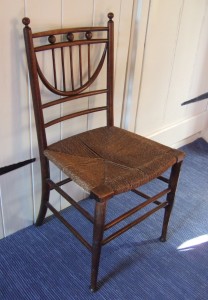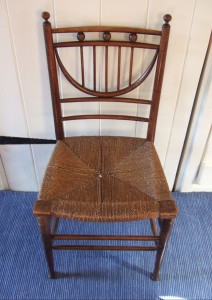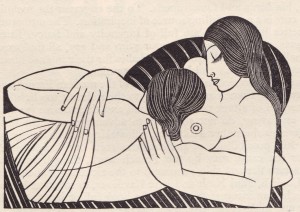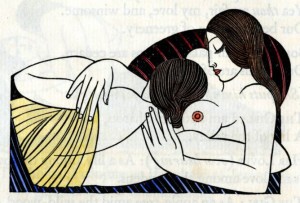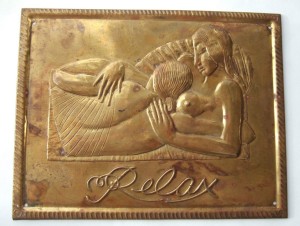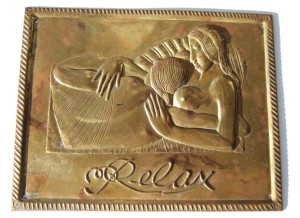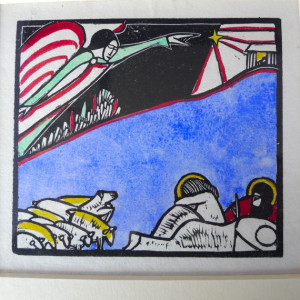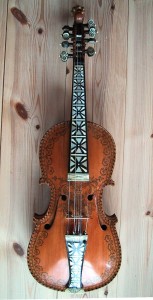In the 1950s the University of Bristol Dramatic Society had a tradition of undertaking summer tours of West Country villages, performing one of two plays in schools, church rooms, and village, town and Women’s Institute halls. I don’t know when this tradition started, nor when it ended, but I do know that such a tour took place both in 1955 and 1956. My parents became engaged while they were on the 1955 tour, when my mother was 21 and my father about to turn 24.
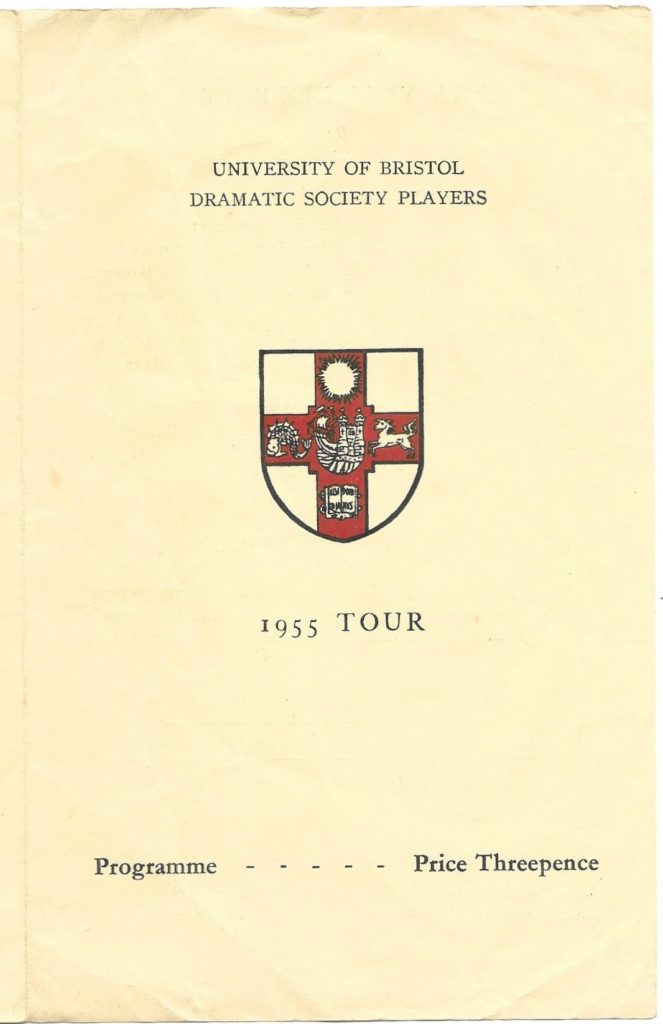
1955 UBDS Players Tour programme
I know little about these tours, but during my riffling through family papers and photographs I have been able to piece together a small account of the 1955 tour. I’ll try in the coming weeks to do something similar with the 1956 one, for which I have less information. But right now the focus is on 1955.
The two plays that were performed were As You Like It by William Shakespeare, and The Importance of Being Earnest by Oscar Wilde. The first performance of the tour was on Friday 8 July 1955, at Wells Town Hall in Somerset, and the final performance was possibly at the Town Hall, Dulverton, also in Somerset, on Thursday 4 August 1955. In between the tour travelled mainly through Somerset, but also ventured into Devon and Dorset. On Friday 29 July my parents got engaged, while they were at the Somerset village of Hardington Mandeville.
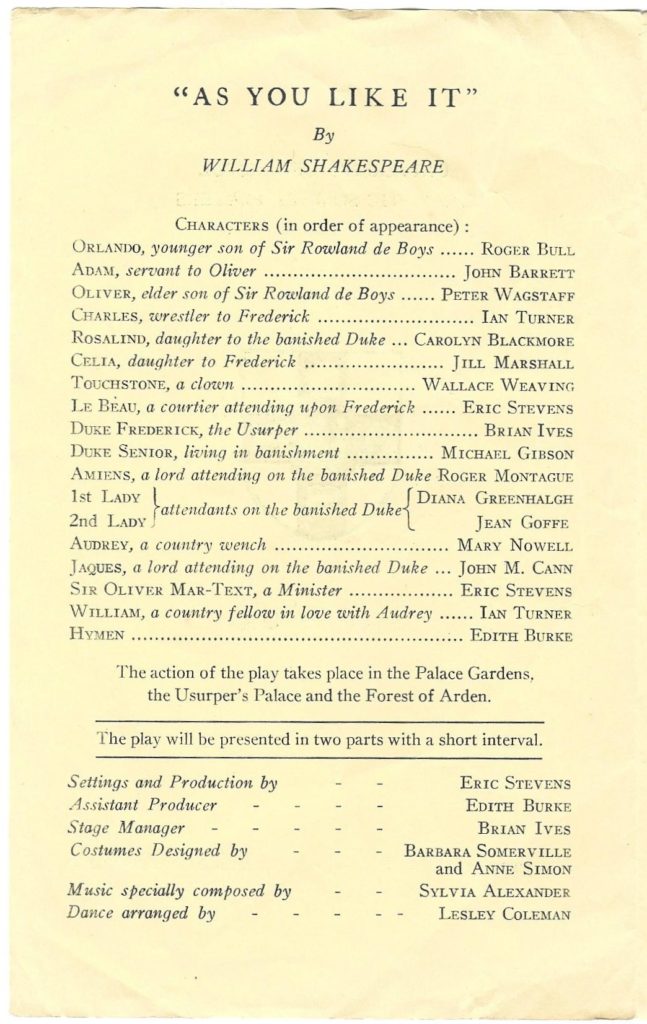
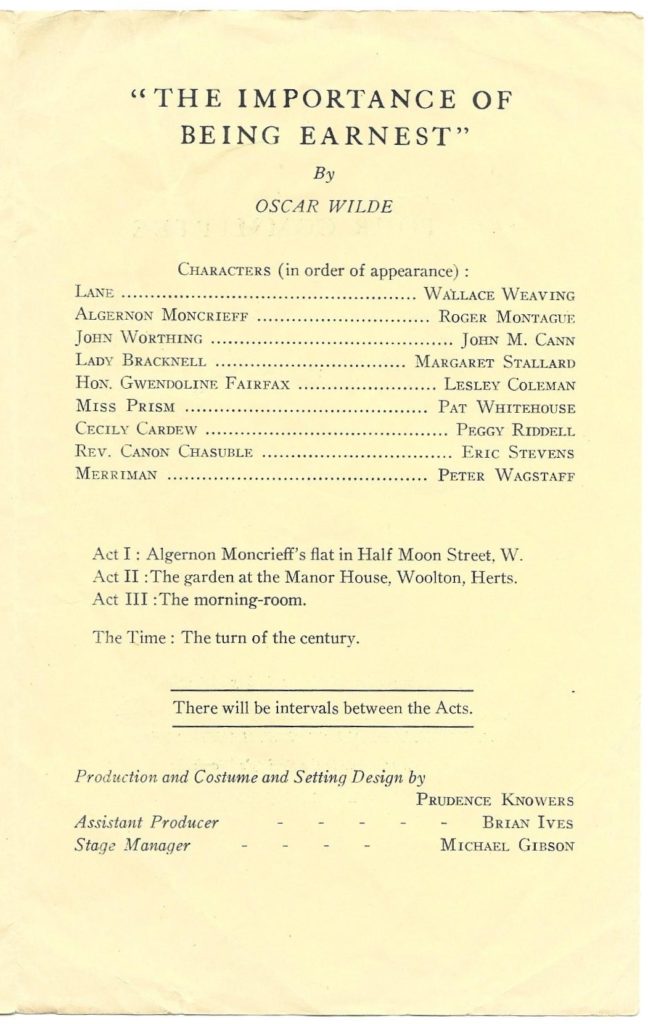
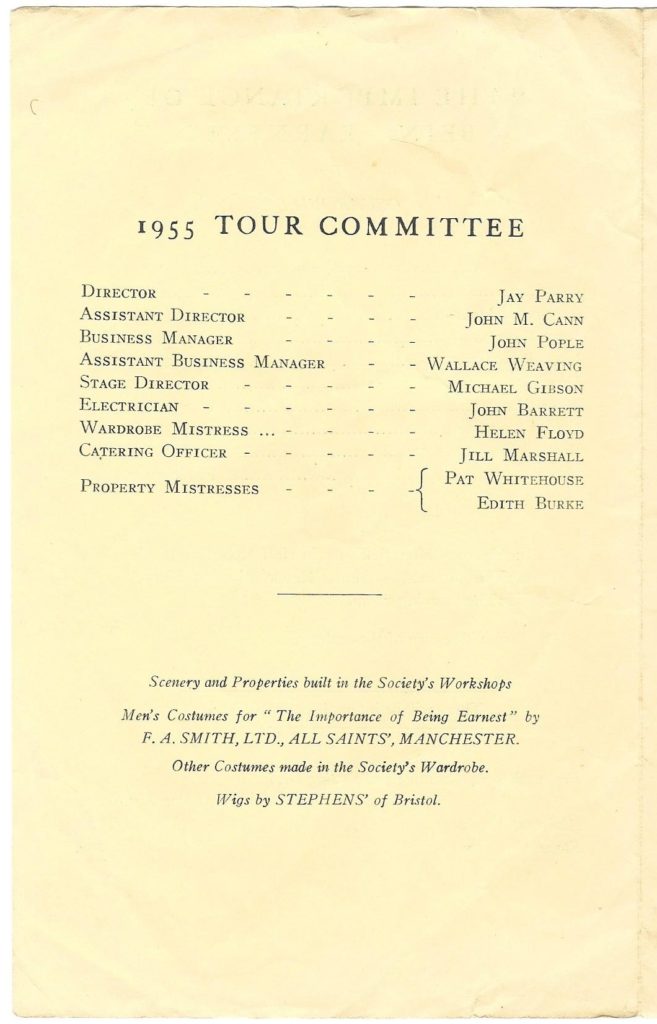
Luckily a typewritten itinerary for the tour survives, annotated by my father, as well as my mother’s diary for 1955. There is a very slight discrepancy between the two for places and dates, but I would be inclined to follow the itinerary as I think the diary entries might represent the preliminary dates given to the cast and crew, before being refined into what was presented in the typewritten itinerary. Certainly my father didn’t amend any of the dates or places on it.
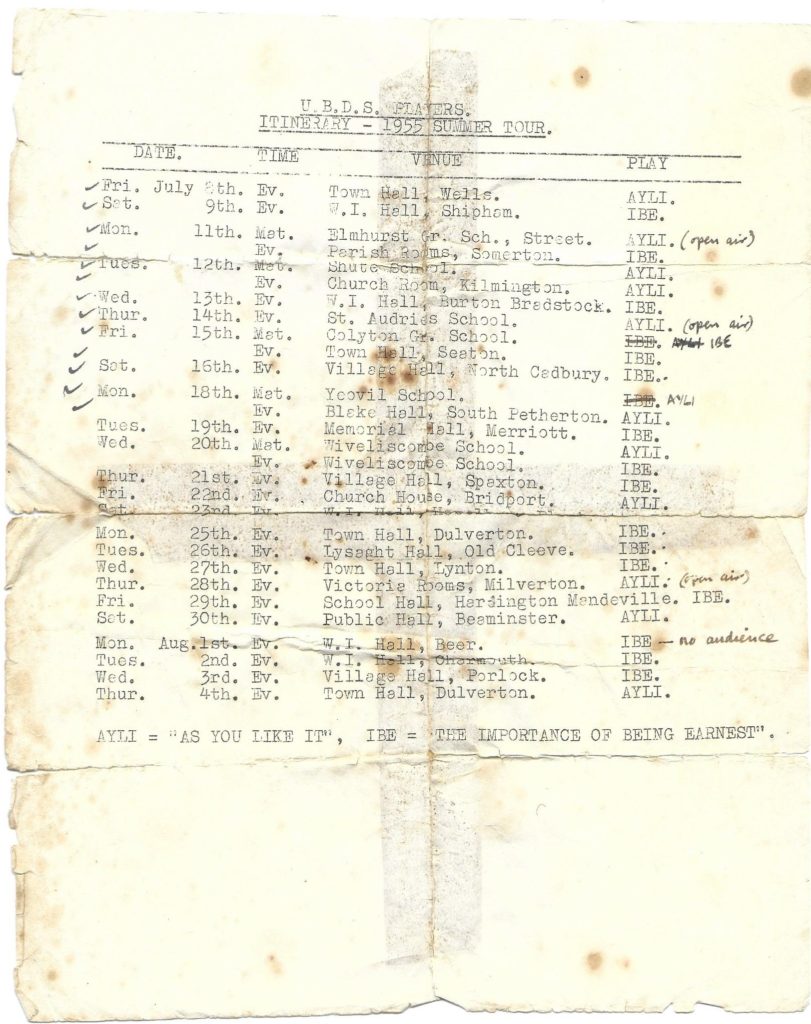
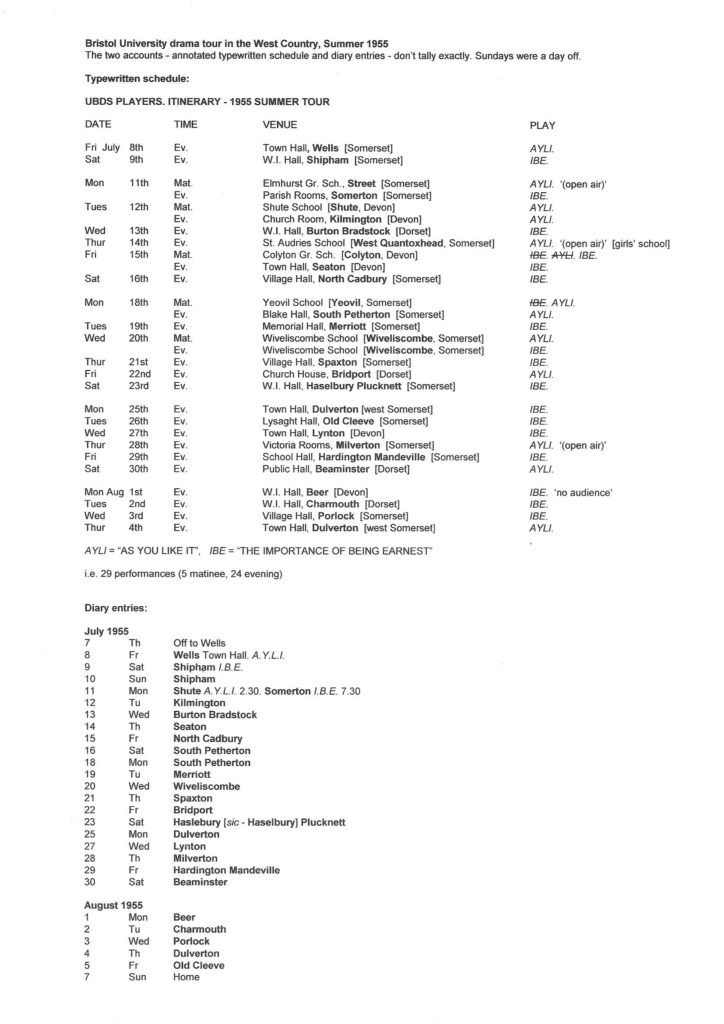
The 34 photos that survive are very small black and white prints, but they can tell a lot about the life on the tour. Two lorries were packed up by the side of the Victoria Rooms in Bristol: it seems the whole production was carried in these two vehicles. The students roughed it, sleeping in the halls after the performances, or if the weather was clement, sleeping out under the stars. Each day the production had to be unpacked from the lorries, the stage, backdrop, sound and lighting, and seating for the audience set up, the costumes and make-up and wigs put on often in makeshift dressing rooms (again, sometimes outdoor ones), and the performance given. Then everything was taken down, packed up and ready for the next stop on the schedule. Sometimes there were two performances in a day, a matinee and an evening performance, in different places. Sundays were a day off.
My father’s annotations of the itinerary mark three open-air performances, and that there was no audience for the evening performance of The Importance of Being Earnest at the Women’s Institute hall in Beer, Devon, on Monday 1 August!
The photos as found were in a muddled pile, with no negatives to help with ordering them, and no annotations on the backs. I have put them in some sort of order here, but as many of the places shown are unknown to me, I almost certainly haven’t placed them in the right order.

University of Bristol Dramatic Society Players’ Tour 1955. Packing the lorry outside the Victoria Rooms, Bristol, ?8 July 1955. Photo 2264.

University of Bristol Dramatic Society Players’ Tour 1955. Packing the lorry outside the Victoria Rooms, Bristol, ?8 July 1955. Peggy Riddel at left. Photo 2265.

University of Bristol Dramatic Society Players’ Tour 1955. Travelling in the lorries. Photo 2266.

University of Bristol Dramatic Society Players’ Tour 1955. A stop in a town. Squinting at the original with a jeweller’s loupe I can see the pub/hotel is The Old White Hart or less likely The Old White Hare, and that the street opposite the pub/hotel is South Street. Photo 2267.

University of Bristol Dramatic Society Players’ Tour 1955. I assume the students are buying some food from this gentleman. Photo 2268.

University of Bristol Dramatic Society Players’ Tour 1955. ?Roger Montague having a snooze in the back of one of the lorries. Photo 2269.
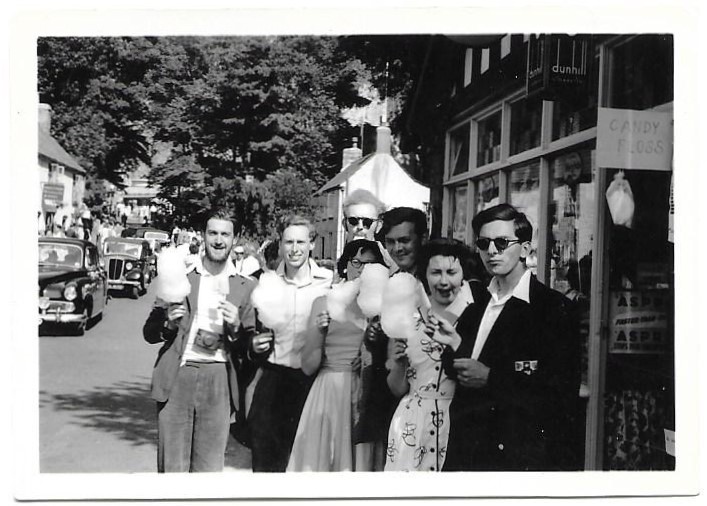
University of Bristol Dramatic Society Players’ Tour 1955. A stop for candy floss and lollies. Photo 2270.
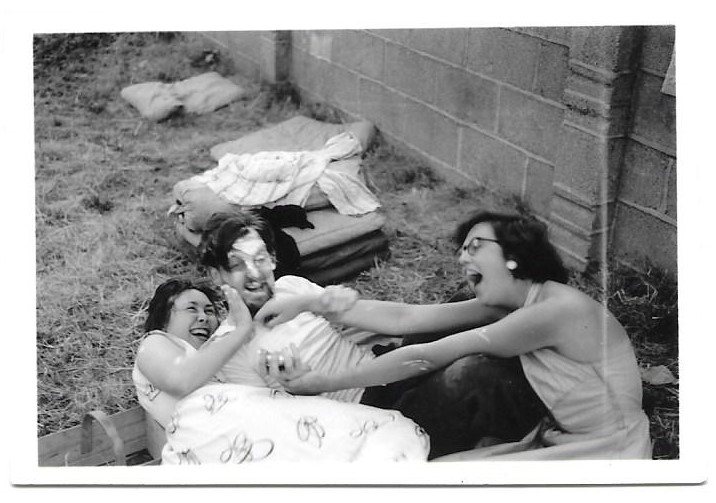
University of Bristol Dramatic Society Players’ Tour 1955. Shenanigans. This camp site with its distinctive wall was used again during the 1956 tour. Photo 2271.

University of Bristol Dramatic Society Players’ Tour 1955. On the swings. Photo 2272.
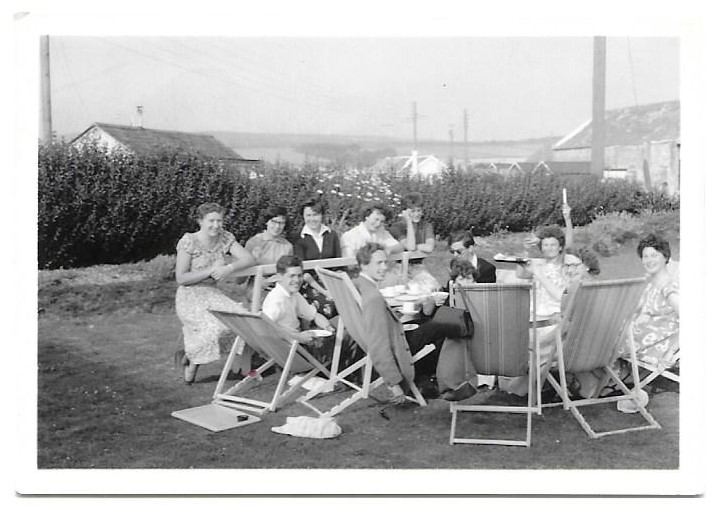
University of Bristol Dramatic Society Players’ Tour 1955. One of the camp sites. Photo 2273.
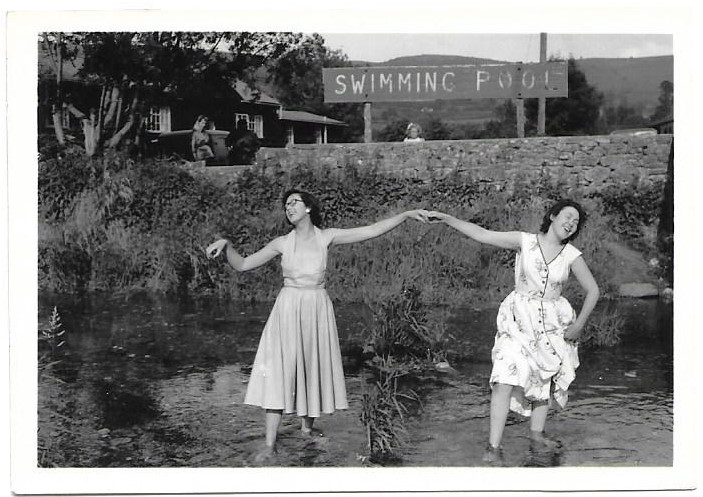
University of Bristol Dramatic Society Players’ Tour 1955. Two nymphs and onlookers. Photo 2274.

University of Bristol Dramatic Society Players’ Tour 1955. I think this lady is Prudence Knowers. Photo 2275.

University of Bristol Dramatic Society Players’ Tour 1955. Night time relaxing – after a performance? ?Roger Montague standing at right. Photo 2276.

University of Bristol Dramatic Society Players’ Tour 1955. Camping in a village hall. Photo 2277.

University of Bristol Dramatic Society Players’ Tour 1955. I think this must be in one of the Town Halls that the tour visited. ?Peggy Riddel. Photo 2278.

University of Bristol Dramatic Society Players’ Tour 1955. Camp beds in one of the halls. Roger Montague and Peggy Riddel at the pole. Photo 2279.

University of Bristol Dramatic Society Players’ Tour 1955. Constructing the stage. Photo 2280.
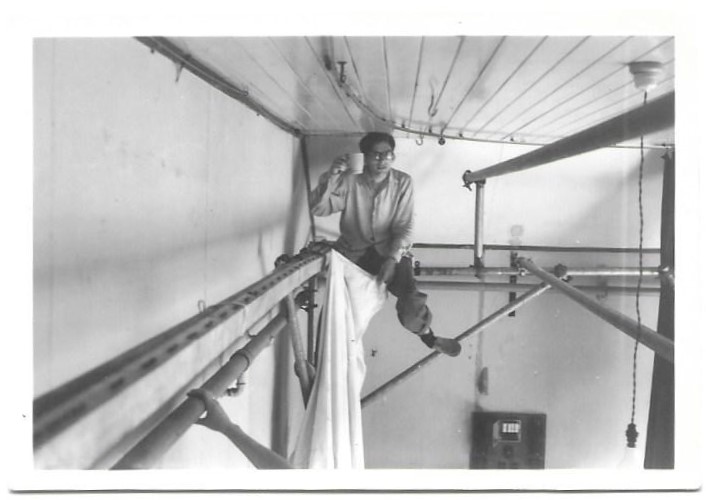
University of Bristol Dramatic Society Players’ Tour 1955. Hanging the backdrop with a cuppa. Photo 2281.

University of Bristol Dramatic Society Players’ Tour 1955. A painted backdrop for As You Like It. Photo 2282.
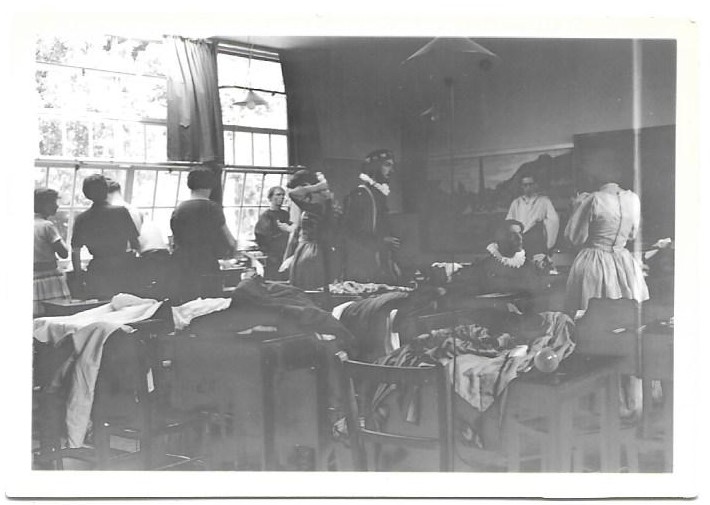
University of Bristol Dramatic Society Players’ Tour 1955. Getting ready for a performance of As You Like It. Photo 2283.
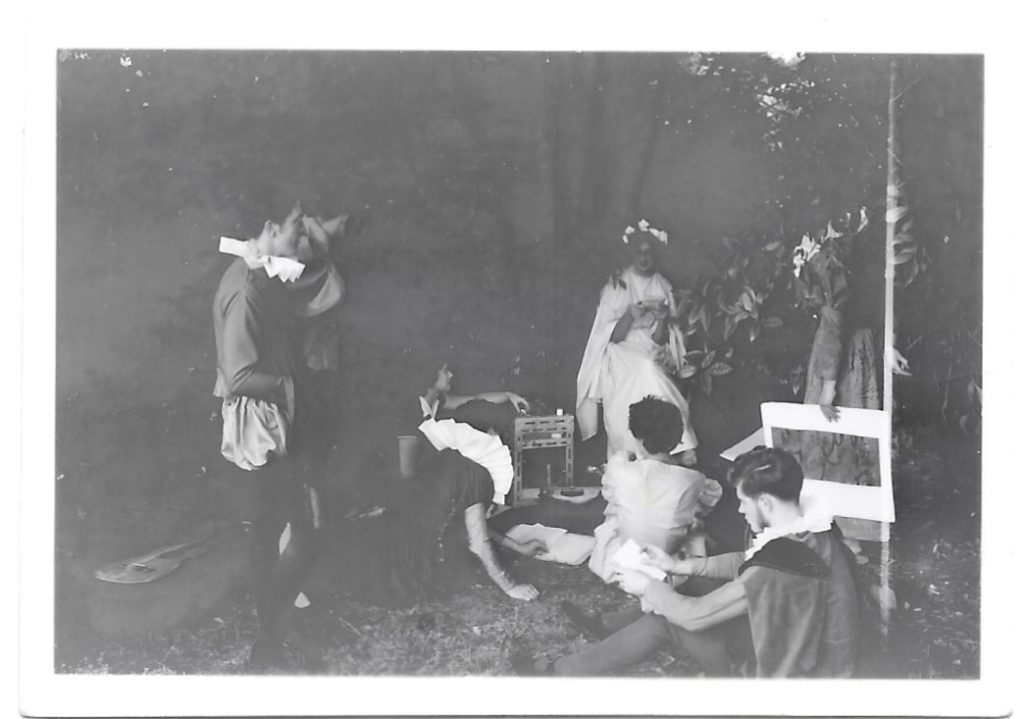
University of Bristol Dramatic Society Players’ Tour 1955. Backstage at an outdoor performance of As You Like It. Roger Montague seated at front right. Photo 2284.
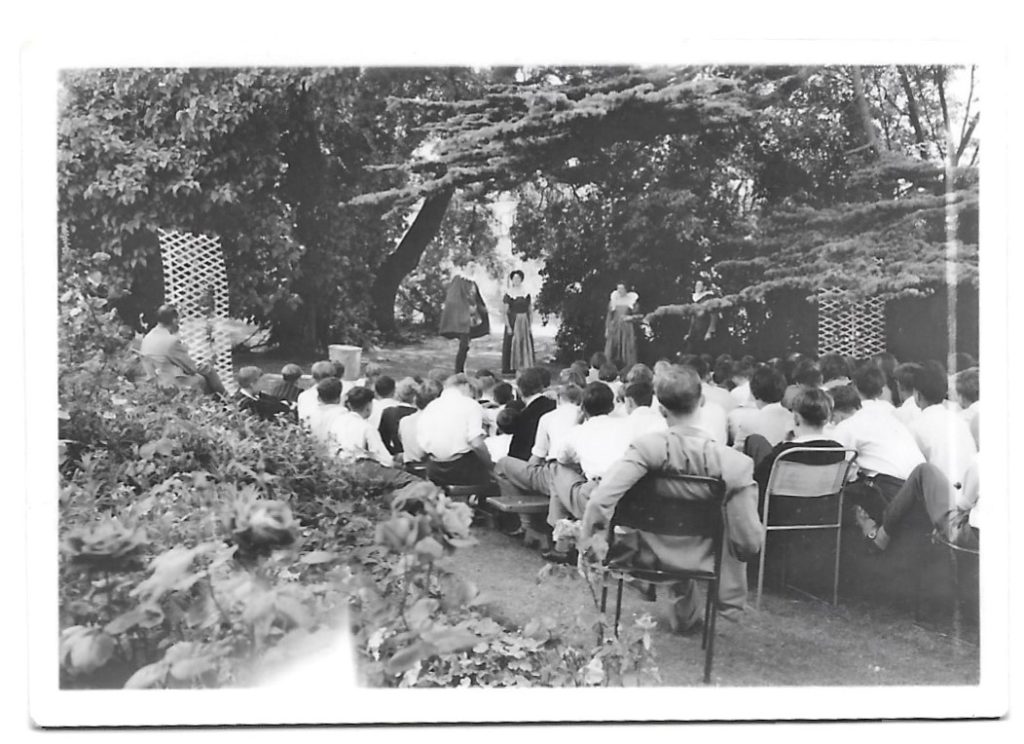
University of Bristol Dramatic Society Players’ Tour 1955. An outdoor performance of As You Like It, at a school. Roger Montague at right. Photo 2285.
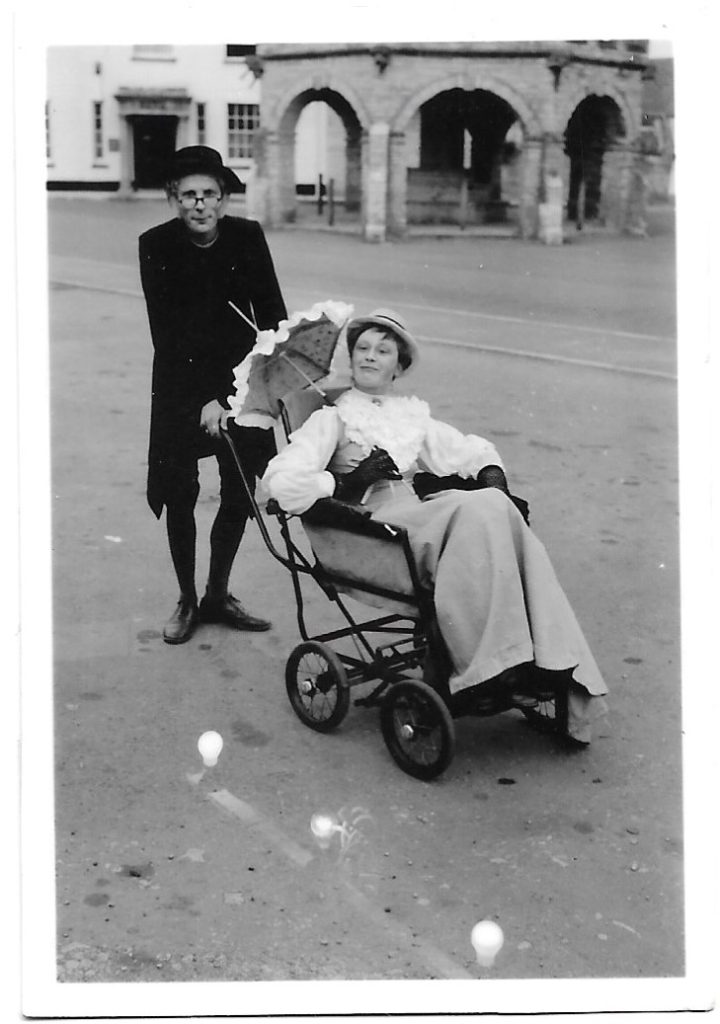
University of Bristol Dramatic Society Players’ Tour 1955. Drumming up publicity in Somerton, by the Butter Cross, for that evening’s performance of The Importance of Being Earnest: Eric Stevens, (Rev. Canon Chasuble), pushing Pat Whitehouse (Miss Prism) in a chair. Photo 2286.
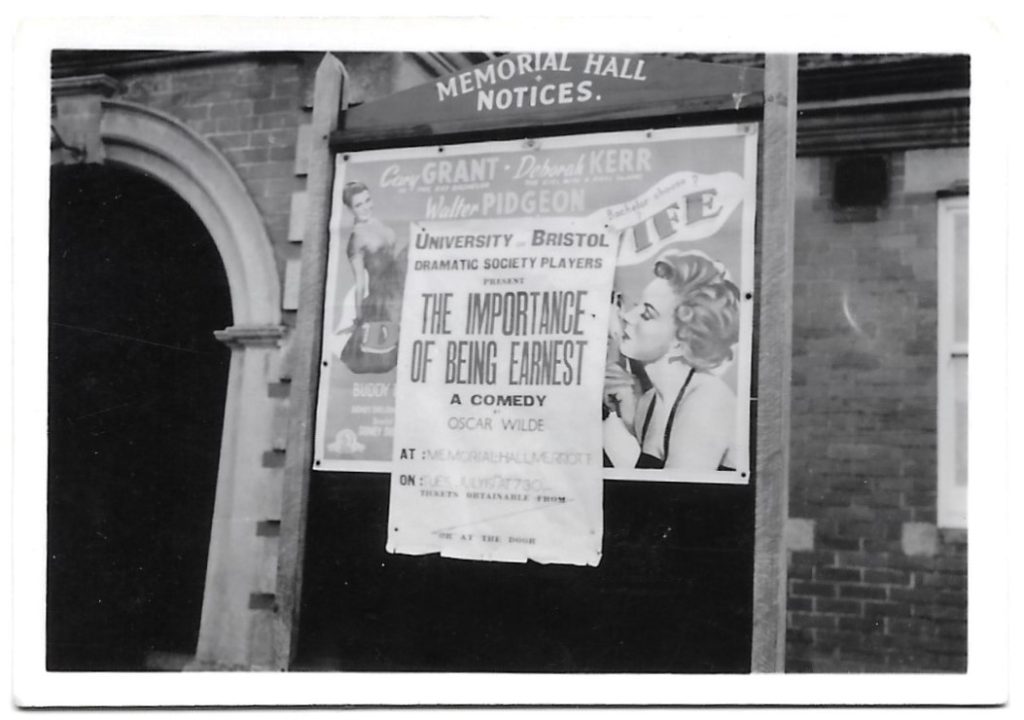
University of Bristol Dramatic Society Players’ Tour 1955. A poster for the performance of The Importance of Being Earnest at the Memorial Hall, Merriott on Tuesday 19 July 1955 at 7.30 pm. Photo 2287.
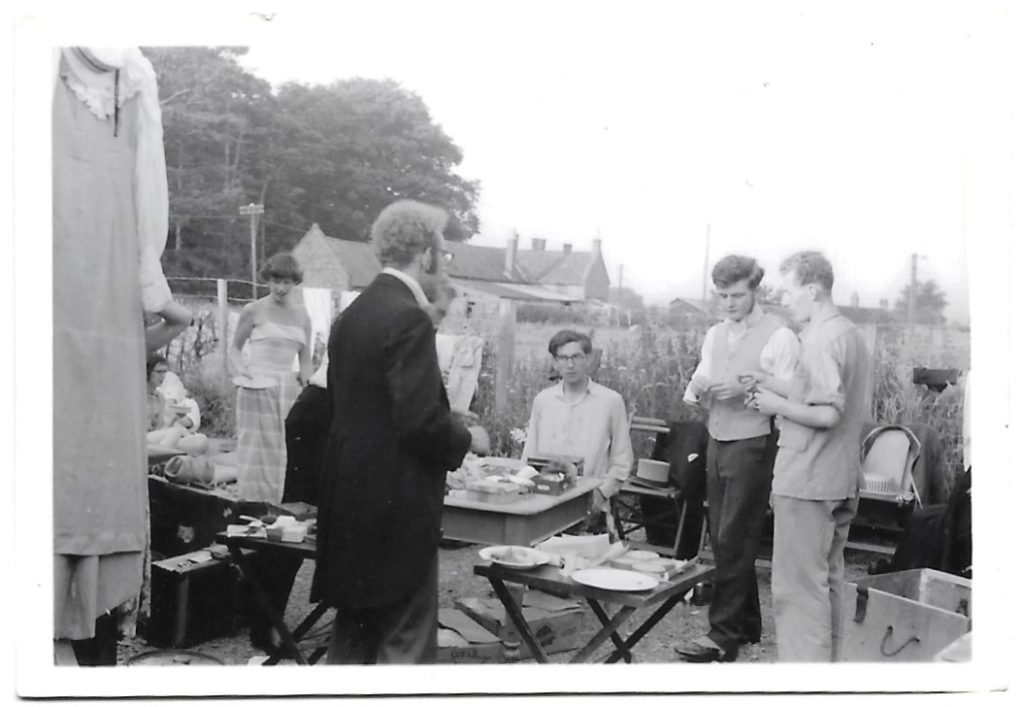
University of Bristol Dramatic Society Players’ Tour 1955. Getting ready outdoors for a performance of The Importance of Being Earnest. John M Cann standing in foreground, Roger Montague second right. Photo 2288.
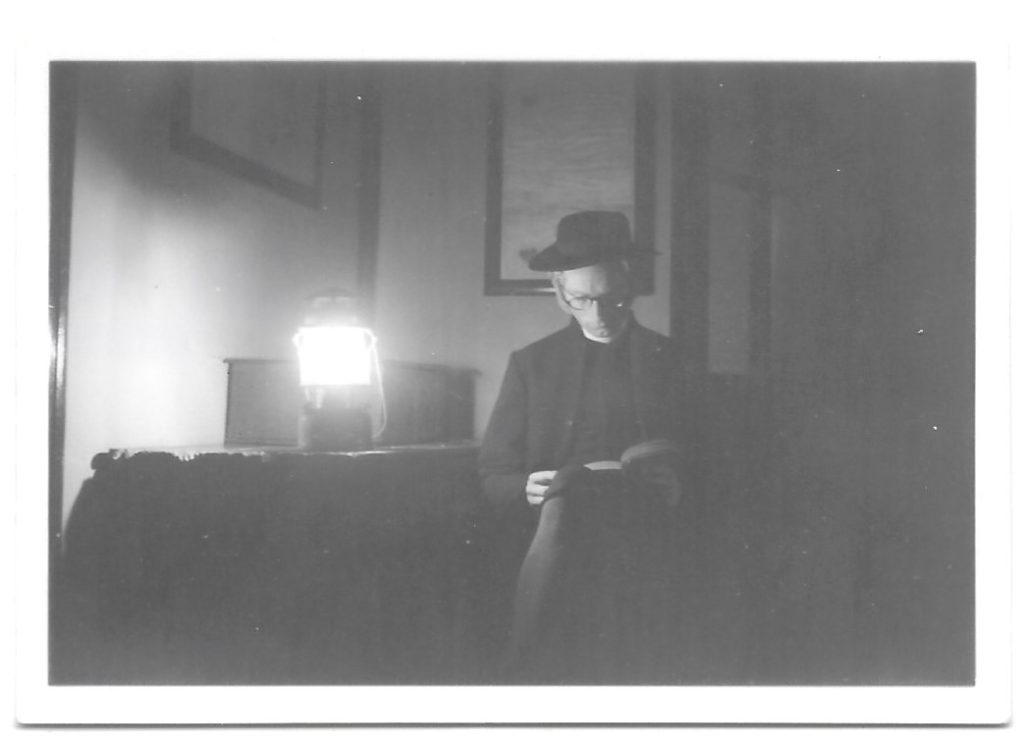
University of Bristol Dramatic Society Players’ Tour 1955. Waiting for the performance of The Importance of Being Earnest. Eric Stevens in costume as Rev. Canon Chasuble. Photo 2289.
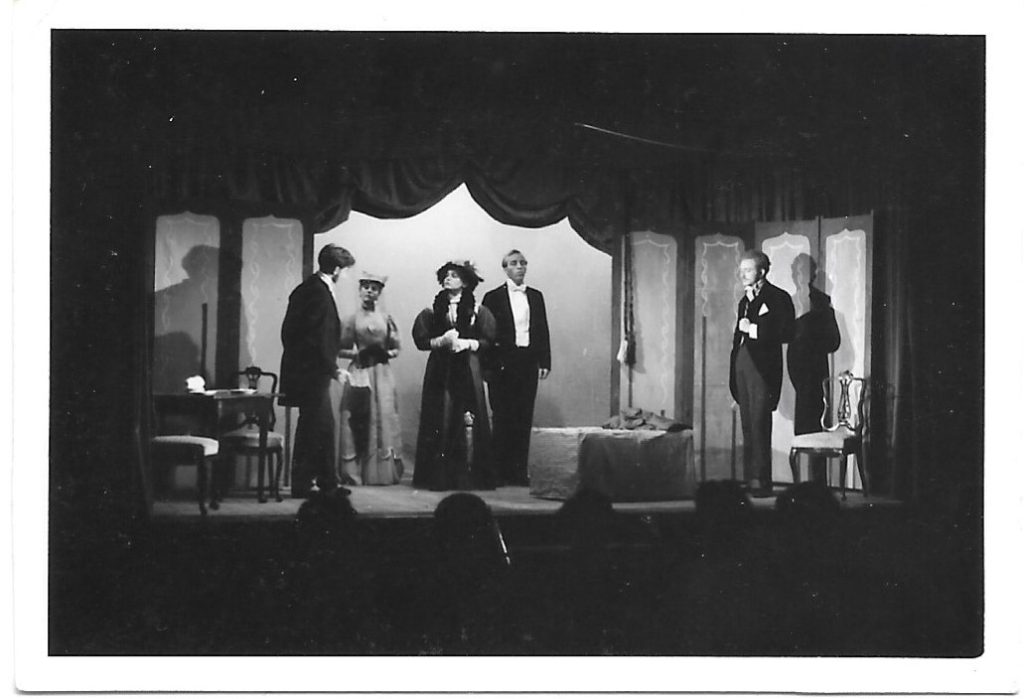
University of Bristol Dramatic Society Players’ Tour 1955. Performance of The Importance of Being Earnest. L-R: Algernon Moncrieff (Roger Montague), Hon. Gwendoline Fairfax (Lesley Coleman), Lady Bracknell (Margaret Stallard), Lane (the butler – Wallace Weaving), John (Jack/Ernest) Worthing (John M Cann). Photo 2290.
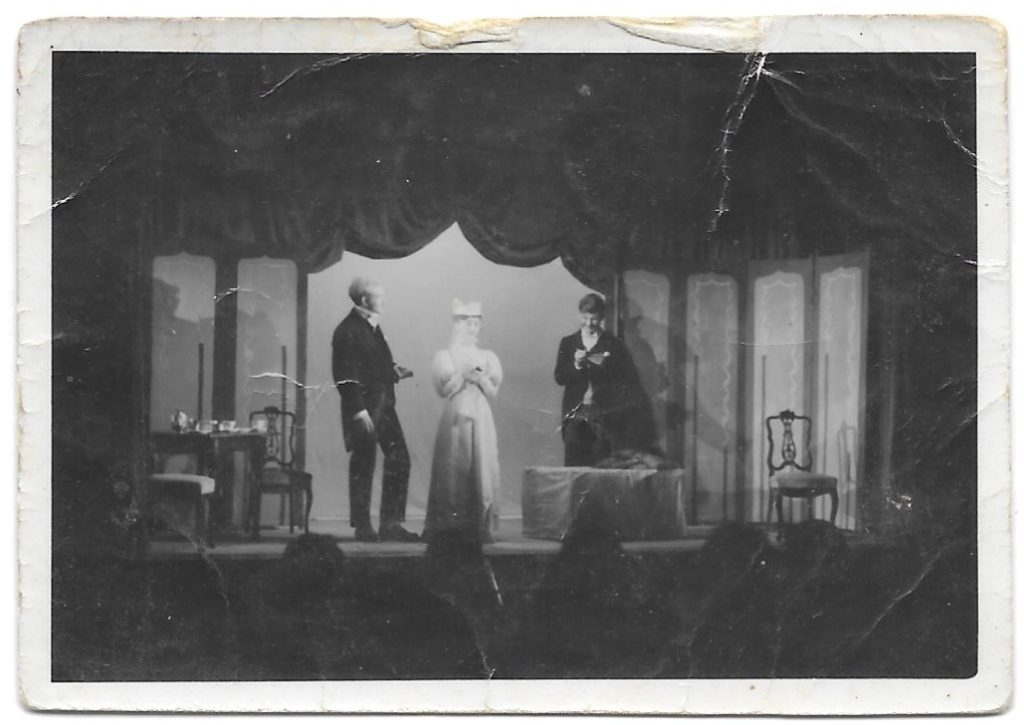
University of Bristol Dramatic Society Players’ Tour 1955. Performance of The Importance of Being Earnest. L-R: John (Jack/Ernest) Worthing (John M Cann), Hon. Gwendoline Fairfax (Lesley Coleman), Algernon Moncrieff (Roger Montague). Photo 2291.

University of Bristol Dramatic Society Players’ Tour 1955. Performance of The Importance of Being Earnest. L-R: Hon. Gwendoline Fairfax (Lesley Coleman), John (Jack/Ernest) Worthing (John M Cann). Photo 2292.

University of Bristol Dramatic Society Players’ Tour 1955. Performance of The Importance of Being Earnest. L-R: Algernon Moncrieff (Roger Montague), Cecily Cardew (Peggy Riddel). Photo 2293.

University of Bristol Dramatic Society Players’ Tour 1955. Performance of The Importance of Being Earnest. L-R: L-R: Miss Prism (Pat Whitehouse), Cecily Cardew (Peggy Riddel), Algernon Moncrieff (Roger Montague), John (Jack/Ernest) Worthing (John M Cann), Rev. Canon Chasuble (Eric Stevens). Photo 2294.

University of Bristol Dramatic Society Players’ Tour 1955. Performance of The Importance of Being Earnest. L-R: Algernon Moncrieff (Roger Montague), John (Jack/Ernest) Worthing (John M Cann), Hon. Gwendoline Fairfax (Lesley Coleman), Cecily Cardew (Peggy Riddel). Photo 2295.

University of Bristol Dramatic Society Players’ Tour 1955. Performance of The Importance of Being Earnest. L-R: Lady Bracknell (Margaret Stallard), Hon. Gwendoline Fairfax (Lesley Coleman), John (Jack/Ernest) Worthing (John M Cann), Rev. Canon Chasuble (Eric Stevens), Miss Prism (Pat Whitehouse), Algernon Moncrieff (Roger Montague), Cecily Cardew (Peggy Riddel). Photo 2296.
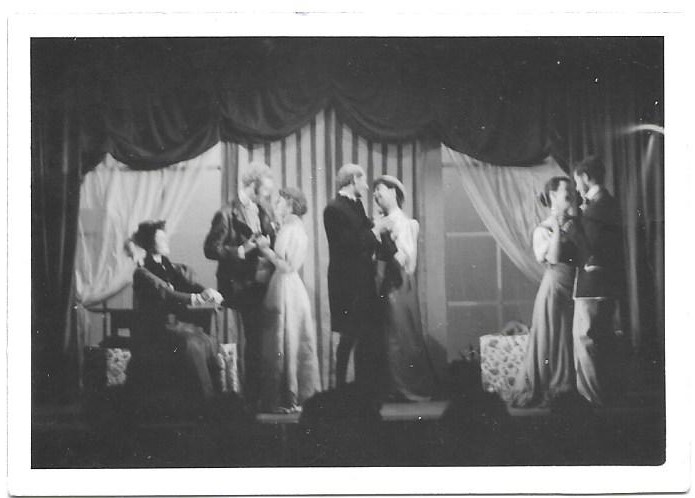
University of Bristol Dramatic Society Players’ Tour 1955. Performance of The Importance of Being Earnest. L-R: Lady Bracknell (Margaret Stallard), John (Jack/Ernest) Worthing (John M Cann), Hon. Gwendoline Fairfax (Lesley Coleman), Rev. Canon Chasuble (Eric Stevens), Miss Prism (Pat Whitehouse), Cecily Cardew (Peggy Riddel), Algernon Moncrieff (Roger Montague). Photo 2297.
A lovely story I remember being told was that my parents were so deliriously in love that they kissed during a scene in The Importance of Being Earnest when they weren’t supposed to.
A member of the tour was Wallace Weaving (‘Wally’). He married Anne Lennard, my mother’s good friend at university, on 6 July 1957, just a couple of weeks before my parents married. The Weavings had three children, including Hugo Weaving, who went on to become a rather more famous actor than his father …
We took many of our family holidays in the West Country, and my parents often commented on the large Wellingtonia that grew by the old road by the village of Norton-sub-Hamdon, (now the south side of the A303, just near the turning for Crewkerne), remembering it from their time on the tour. In later years they moved to West Dorset, and I would pass this tree every time I drove to see them. For me, it will always be the tree that marked their falling in love.
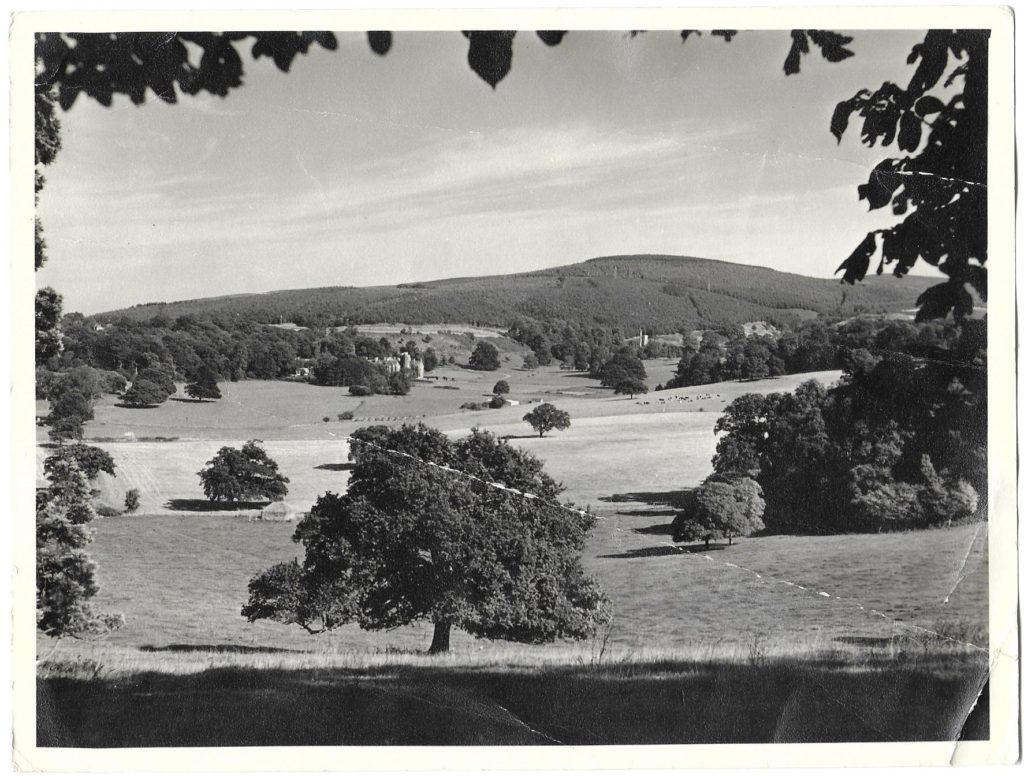
A stock photograph in my parents’ photo collection of St Audries School in Somerset. The tour visited here on Thursday 14 July 1955 for an open-air evening performance of As You Like It. I wonder if the cast camped out here? It’s a very romantic setting … Photo 2356.
There are also photos from the 1956 tour, though I think only my mother took part in this (just after she’d graduated) as my father graduated in 1955 and was working by then, and I can’t see him in any of the photos. I don’t have a programme for the 1956 tour, but I do have an itinerary. I will try to put together a piece on what I know of it.
I pulled together a list of everyone I know from the programme that was involved in the 1955 tour: there may be others missing.
Players (some backstage positions as well):
John Barrett: AYLI; 1955 Tour Committee electrician
Carolyn Blackmore: AYLI
Roger Bull: AYLI
Edith Burke: AYLI; assistant producer AYLI; 1955 Tour Committee property mistress
John M Cann: AYLI; IBE; 1955 Tour Committee assistant director
Lesley Coleman: IBE; dance arranger AYLI
Michael Gibson: AYLI; stage manager IBE; 1955 Tour Committee stage director
Jean Goffe: AYLI
Diana Greenhalgh: AYLI
Brian Ives: AYLI; stage manager AYLI; assistant producer IBE
Jill Marshall: AYLI; 1955 Tour Committee catering officer
Roger Montague: AYLI; IBE
Mary Nowell: AYLI
Peggy Riddel: IBE
Margaret Stallard: IBE
Eric Stevens: AYLI (x2 parts); IBE; settings and production AYLI
Ian Turner: AYLI (x2 parts)
Peter Wagstaff: AYLI; IBE
Wallace Weaving: AYLI; IBE; 1955 Tour Committee assistant business manager
Pat Whitehouse: IBE; 1955 Tour Committee property mistress
11 men, 9 women = 20 actors / actors and backstage
Non-acting involvement, might not all have been on the tour:
Sylvia Alexander: music composer AYLI
Helen Floyd: 1955 Tour Committee wardrobe mistress
Prudence Knowers: production, costume and setting design IBE
Jay Parry: 1955 Tour Committee director
John Pople: 1955 Tour Committee business manager
Anne Simon: costume design AYLI
Barbara Somerville: costume design AYLI
2 men, 5 women = 7 non-actors
If all those listed went on the tour, 13 men and 14 women = 27 total. There might have been yet more people on the tour that aren’t mentioned in the programme.
If any readers have any memories or knowledge of the tour, or recognise any of the people or places in the photographs, I’d be delighted to hear.
